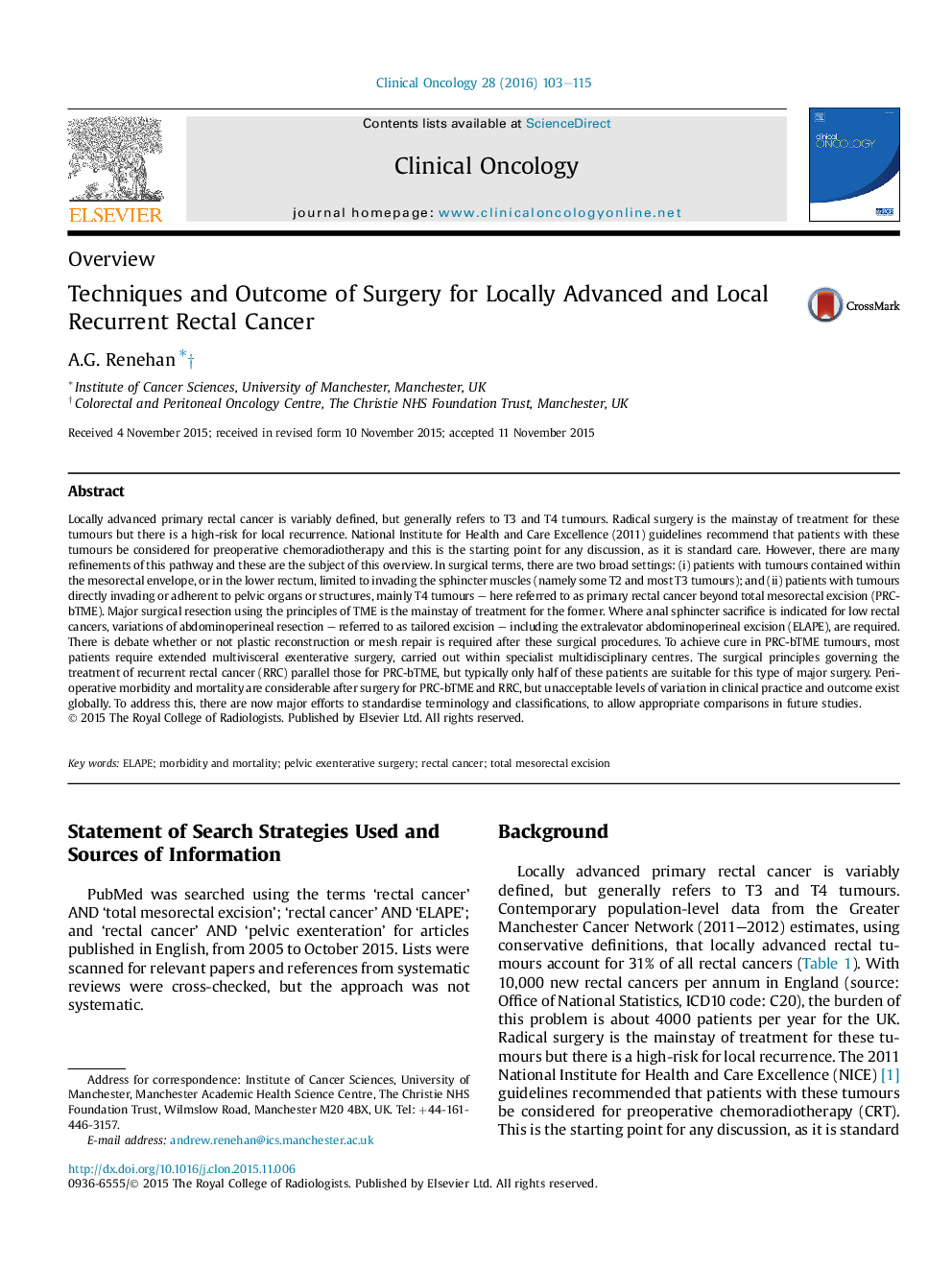| کد مقاله | کد نشریه | سال انتشار | مقاله انگلیسی | نسخه تمام متن |
|---|---|---|---|---|
| 5698382 | 1410357 | 2016 | 13 صفحه PDF | دانلود رایگان |
عنوان انگلیسی مقاله ISI
Techniques and Outcome of Surgery for Locally Advanced and Local Recurrent Rectal Cancer
ترجمه فارسی عنوان
تکنیک ها و نتایج جراحی برای سرطان موضعی پیشرفته و محلی مجاری روتاری
دانلود مقاله + سفارش ترجمه
دانلود مقاله ISI انگلیسی
رایگان برای ایرانیان
کلمات کلیدی
موضوعات مرتبط
علوم پزشکی و سلامت
پزشکی و دندانپزشکی
تومور شناسی
چکیده انگلیسی
Locally advanced primary rectal cancer is variably defined, but generally refers to T3 and T4 tumours. Radical surgery is the mainstay of treatment for these tumours but there is a high-risk for local recurrence. National Institute for Health and Care Excellence (2011) guidelines recommend that patients with these tumours be considered for preoperative chemoradiotherapy and this is the starting point for any discussion, as it is standard care. However, there are many refinements of this pathway and these are the subject of this overview. In surgical terms, there are two broad settings: (i) patients with tumours contained within the mesorectal envelope, or in the lower rectum, limited to invading the sphincter muscles (namely some T2 and most T3 tumours); and (ii) patients with tumours directly invading or adherent to pelvic organs or structures, mainly T4 tumours - here referred to as primary rectal cancer beyond total mesorectal excision (PRC-bTME). Major surgical resection using the principles of TME is the mainstay of treatment for the former. Where anal sphincter sacrifice is indicated for low rectal cancers, variations of abdominoperineal resection - referred to as tailored excision - including the extralevator abdominoperineal excision (ELAPE), are required. There is debate whether or not plastic reconstruction or mesh repair is required after these surgical procedures. To achieve cure in PRC-bTME tumours, most patients require extended multivisceral exenterative surgery, carried out within specialist multidisciplinary centres. The surgical principles governing the treatment of recurrent rectal cancer (RRC) parallel those for PRC-bTME, but typically only half of these patients are suitable for this type of major surgery. Peri-operative morbidity and mortality are considerable after surgery for PRC-bTME and RRC, but unacceptable levels of variation in clinical practice and outcome exist globally. To address this, there are now major efforts to standardise terminology and classifications, to allow appropriate comparisons in future studies.
ناشر
Database: Elsevier - ScienceDirect (ساینس دایرکت)
Journal: Clinical Oncology - Volume 28, Issue 2, February 2016, Pages 103-115
Journal: Clinical Oncology - Volume 28, Issue 2, February 2016, Pages 103-115
نویسندگان
A.G. Renehan,
